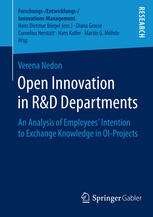

Most ebook files are in PDF format, so you can easily read them using various software such as Foxit Reader or directly on the Google Chrome browser.
Some ebook files are released by publishers in other formats such as .awz, .mobi, .epub, .fb2, etc. You may need to install specific software to read these formats on mobile/PC, such as Calibre.
Please read the tutorial at this link: https://ebookbell.com/faq
We offer FREE conversion to the popular formats you request; however, this may take some time. Therefore, right after payment, please email us, and we will try to provide the service as quickly as possible.
For some exceptional file formats or broken links (if any), please refrain from opening any disputes. Instead, email us first, and we will try to assist within a maximum of 6 hours.
EbookBell Team

4.7
106 reviewsBased on interviews with R&D managers and a survey amongst R&D employees, Verena Nedon shows that perceived social pressure has an immense impact on R&D employees working in OI-projects. Employees’ attitude (regardless of whether positive or negative) and perceived behavioral control play an important, but not dominant role. The study also implies that intrinsic motivators have a stronger effect on employees’ willingness to engage in knowledge exchange with external partners than extrinsic components. By targeting a set of relevant questions related to the human side of open innovation, the study significantly contributes to the micro-foundation of OI-research and sheds light on the hitherto neglected perspective of employees engaged in OI-projects. The findings are relevant for scholars, companies already following the OI-approach and OI-newcomers.